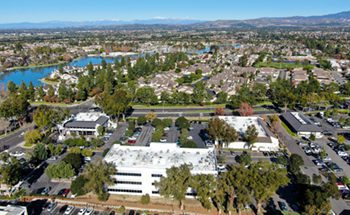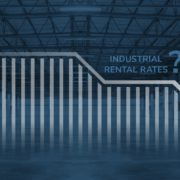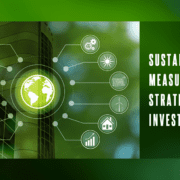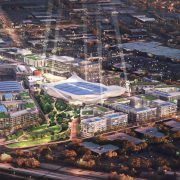The Future is Decentralization
Hold on tight. The commercial real estate rollercoaster is far from over. The pandemic unleashed a wave of structural economic shifts that caused a once-in-a-generation landslide in the industry. And the effects have not been distributed evenly. Demand for downtown office space in many major U.S. cities continues to lag, while class A units that are closer to residential areas are doing better. Class B and C demand is underwhelming almost everywhere, while industrials are doing well. It is a tail of haves and have-nots. What comes next is hard to forecast, but one thing seems clear: the future is decentralization.
It’s going to be choppy for the next couple of quarters.
The U.S. economy roared past expectations in the first half of 2022. It even shrugged off a mini-banking crisis. Despite more momentum than expected, the labor market is poised to weaken, and consumer spending is showing signs of slippage. A recession is still possible, but even without a downturn, economic activity is going to underwhelm for the remainder of the year. A sluggish economy will be accompanied by persistently high interest rates and tighter financial conditions. The Federal Reserve isn’t expected to begin easing rates until the first quarter of 2024. And when they start reducing rates, they won’t do it quickly – expect them to start with a couple of 25 basis point decreases.
In addition to a determined Fed, borrowers are going to have to deal with another round of stress in the regional banking sector. Weakness in the real estate industry is flowing back onto bank balance sheets. Some banks will likely fail or need to be bailed out. And those that don’t will be less likely to lend. The Fed’s latest Senior Loan Officer Opinion Survey on Bank Lending Practices (SLOOS) showed that the number of banks tightening lending standards in the commercial real estate sector is at its highest level ever outside of a recessionary period – the series goes back to the early 1990s. A softening economy, elevated borrowing costs, and another round of stress in the regional banking industry will mean a disappointing couple of quarters for owners and investors.
The future is decentralization, and this is what it will look like.

The economic shifts unleashed by the pandemic created a clear set of winners and losers in the commercial market. The switch to remote office work turned downtowns into deserts as demand for office space evaporated. On the flip side, demand for transportation and warehousing surged as retail shopping moved exclusively online. While they won’t be as extreme, those trends are expected to persist over at least the next couple of years.
Eventually supply and demand will realign, but the landscape will look very different than it did in 2019. The centralized model where businesses cluster in economic centers is gone. Instead, office space will be smaller and closer to residential pockets. This decentralization will also require a broader transportation network. Warehousing will still cluster near ports of entry, but smaller nodes will be needed to better serve more localized markets. Industrial may be the only major class for which the post-pandemic world looks like what came before it. Here’s more on what lies ahead:
- Lack of affordable housing will be a key determinant for the office outlook. While the pandemic released a shockwave in the commercial sector, it was merely the final straw in the residential market. Historically low borrowing costs and decades of underinvestment in housing units meta spike in demand as office workers stayed home. That led to a price surge and the most unaffordable housing market in a generation. While this will unwind some as high mortgage rates depress demand further, don’t expect a return to 2019 prices anytime soon. That means housing will be less affordable going forward. To make matters worse, many downtowns have seen a rise in crime and public transit systems remain on the ropes. Workers will want to keep commute times manageable, which means demand for office space outside of city centers.
- Demand for last-mile transport facilities will remain strong. Looking through the usual cyclical ups-and-downs, demand for warehousing close to final consumers will remain strong. Online retail is expected to continue to steal market share from brick-and-mortar. And the decentralization of housing and office space will mean an even more complicated matrix for the last mile of transport. The response is a more dispersed network of warehouse facilities.
- Industrials will have a good couple of years. Recent fiscal legislation caused a surge in the construction of manufacturing, primarily for companies building computer, electronic and electrical goods. While that strength will cool as the economy slows over the next couple of quarters, don’t expect a sharp downturn. Looking ahead, the AI infrastructure buildout and strong need for transportation goods and medical devices will be a boon to demand for industrial space.
Now may be the time to rent.
There are two sides to every coin. Over the next 12 to 18 months investors and owners in some commercial sectors will struggle. That means savvy renters will be able to swoop in and pick up space at bargain prices. This will be particularly true in downtowns and centralized office centers. On the other hand, pockets of high prices will persist for office space that is closer to residential areas. New construction will likely need to come online in some areas to meet demand. If you’re looking for industrial space, you may get a little breathing room towards the end of the year as the economy slows. But don’t wait too long. Underlying structural forces will eventually lead to a resurgence in demand.
The commercial real estate sector is undergoing a historic shift. Many investors and owners will face challenges. But there will also be opportunities for those builders, owners, and renters who are agile and understand that the future is decentralization.
– Tim Mahedy is the Founder and Chief Economist of Access/Macro – a consultancy focused on uncomplicating the economy so that your business can make better decisions. Visit them at: www.accessmacro.com.









